동학과 현대 과학의 생명사상
최민자 (지은이)모시는사람들2021-09-15
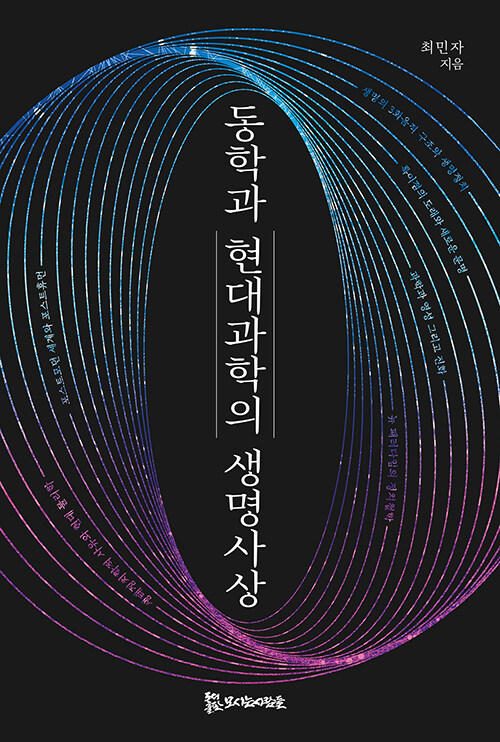




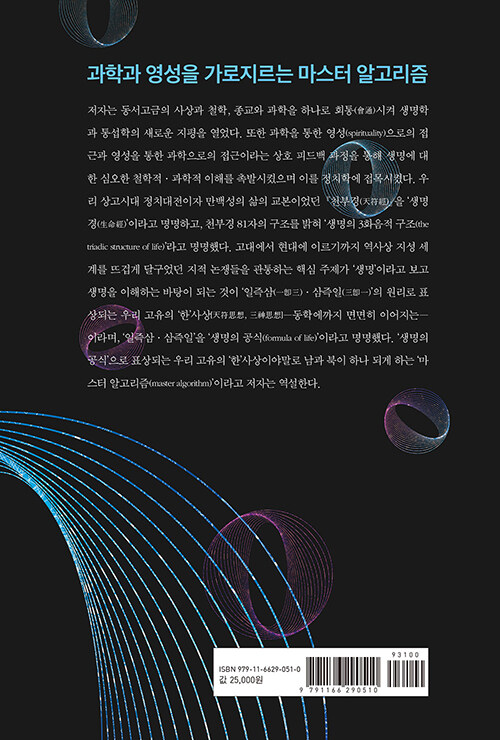










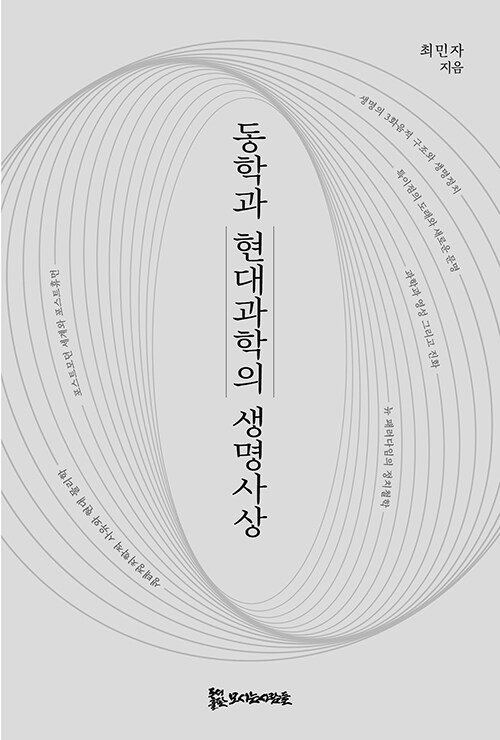
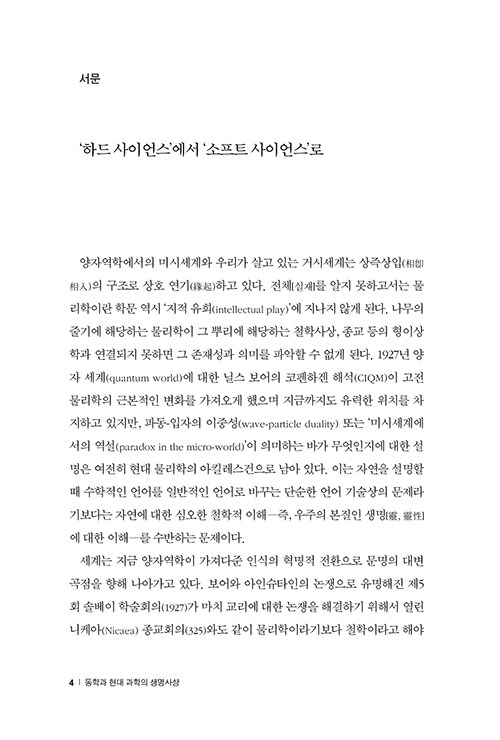
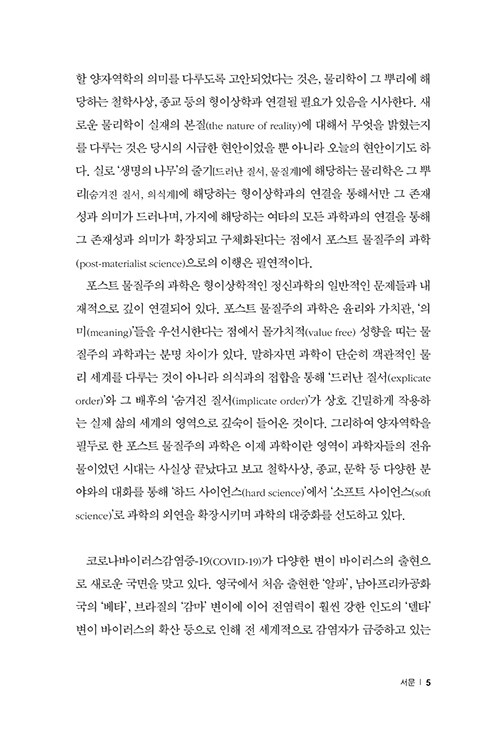
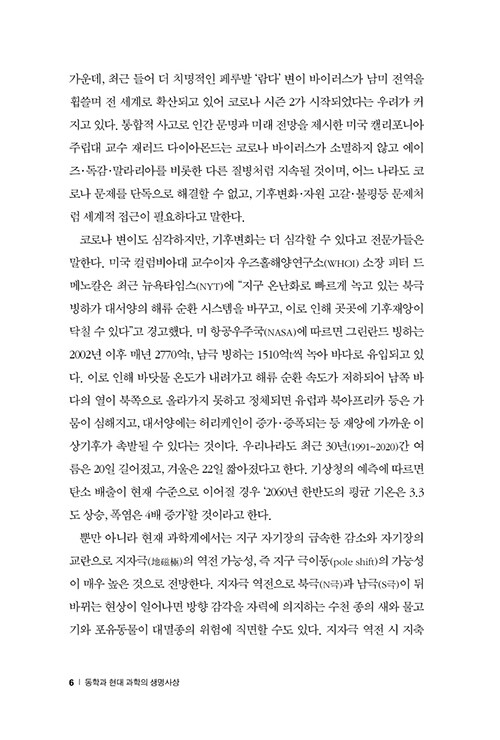
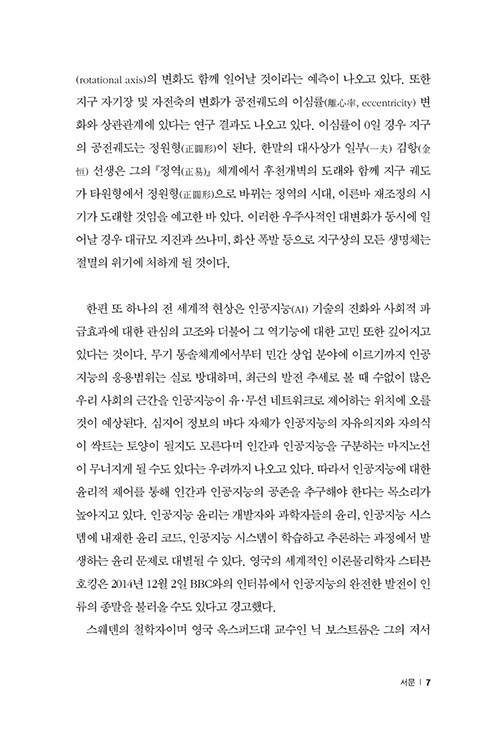
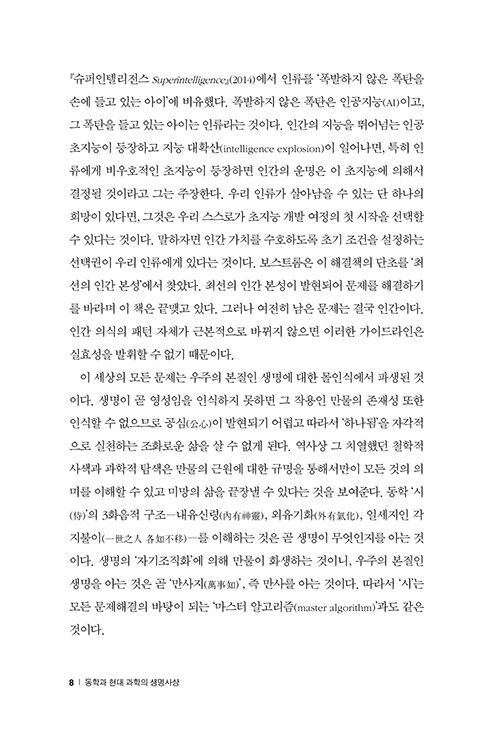
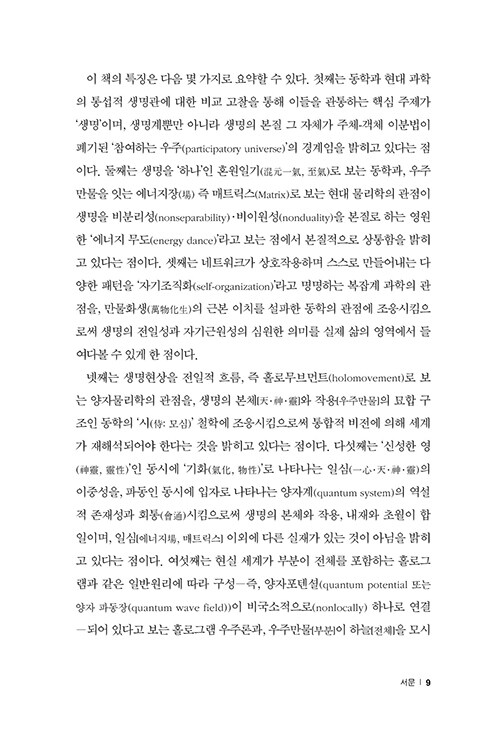
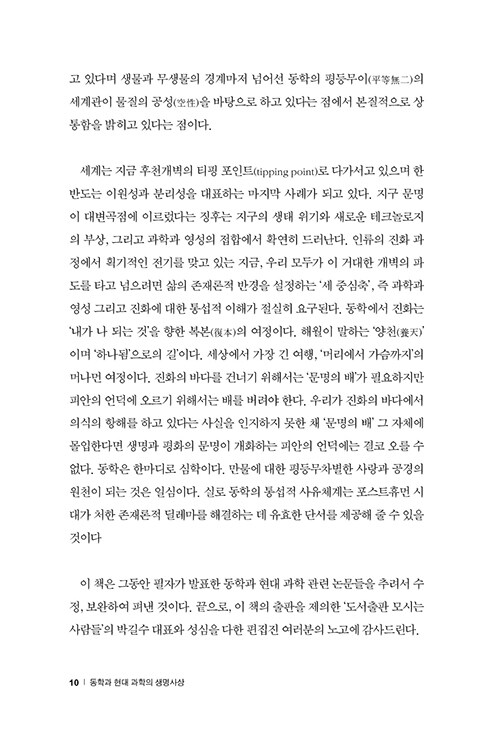

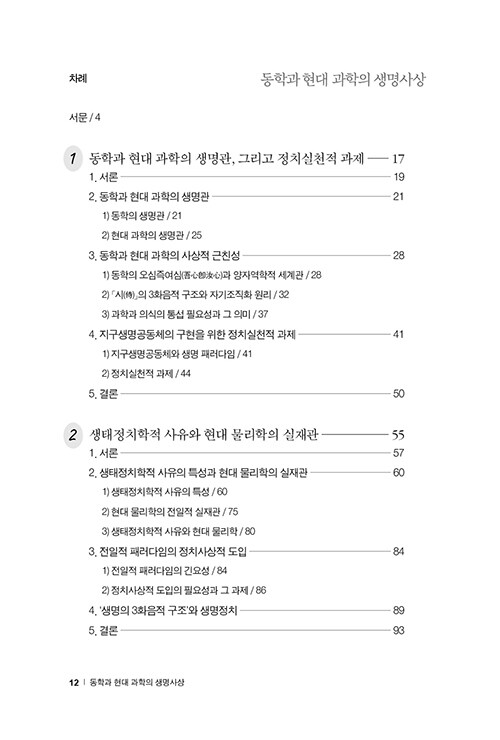
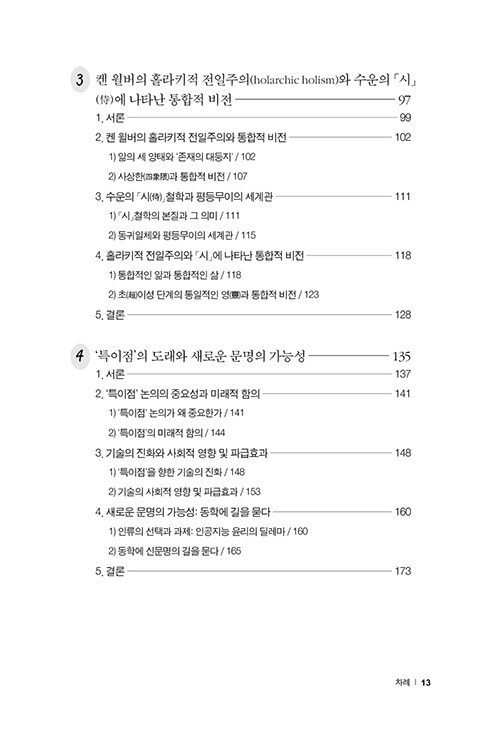
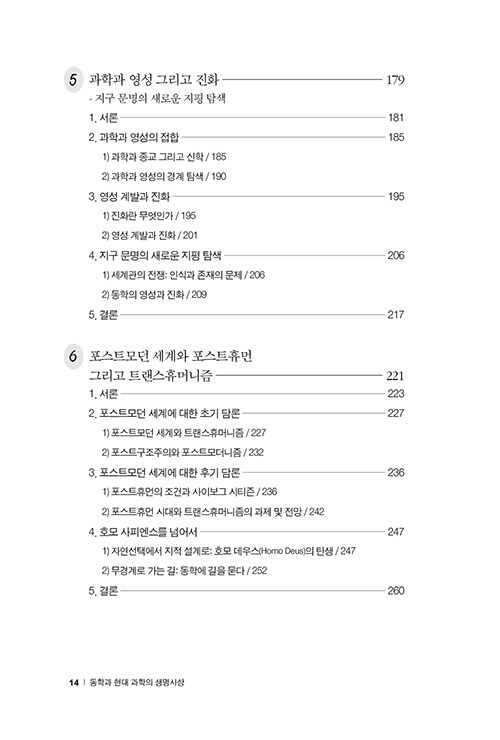
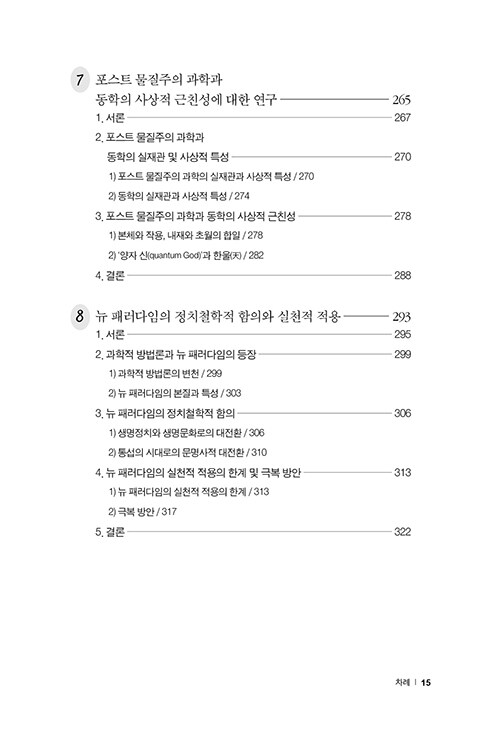
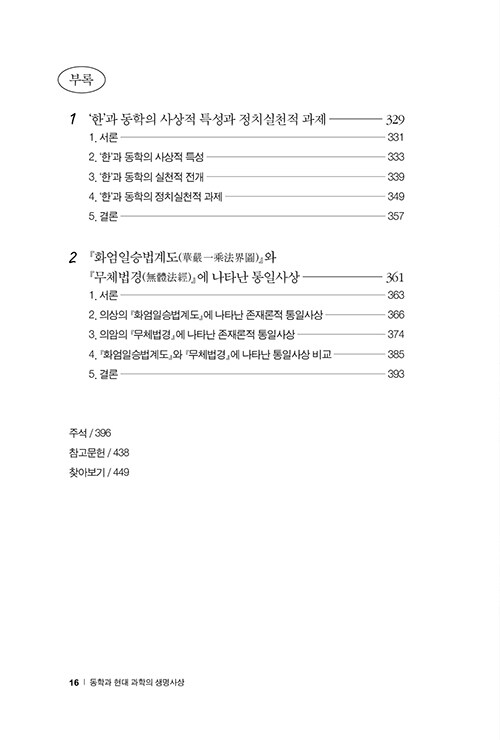
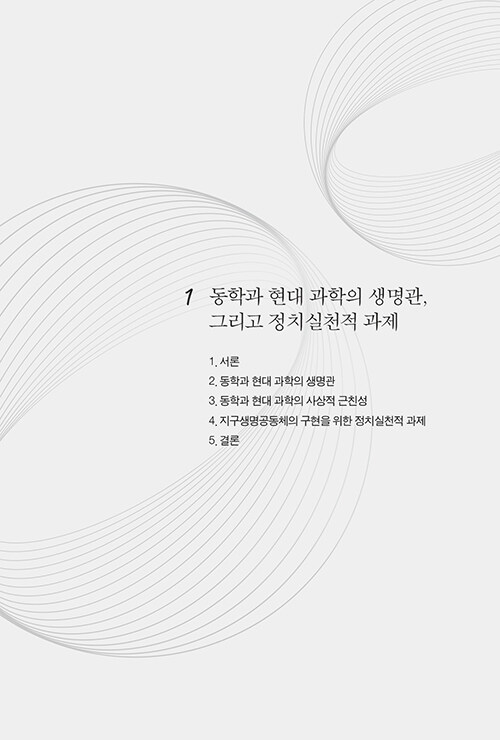
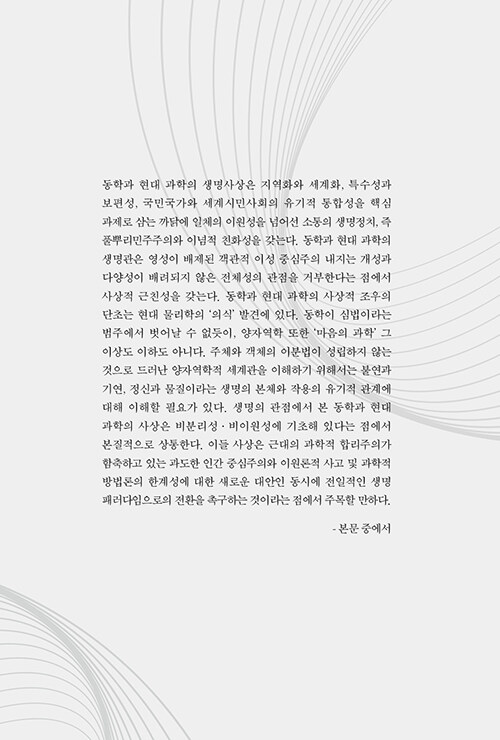

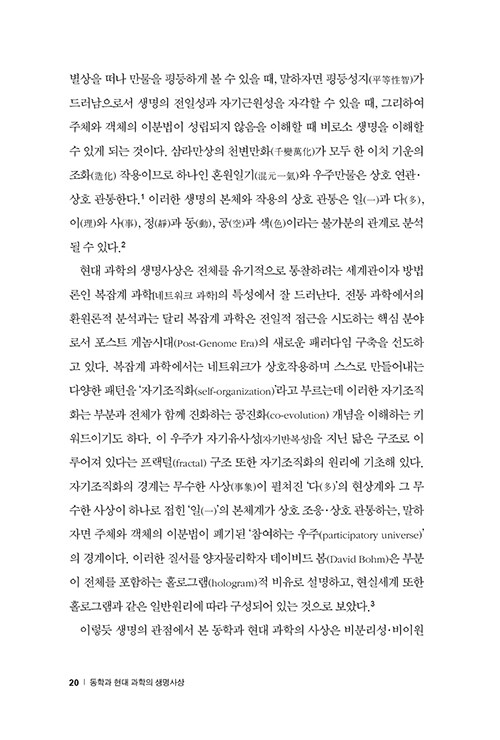
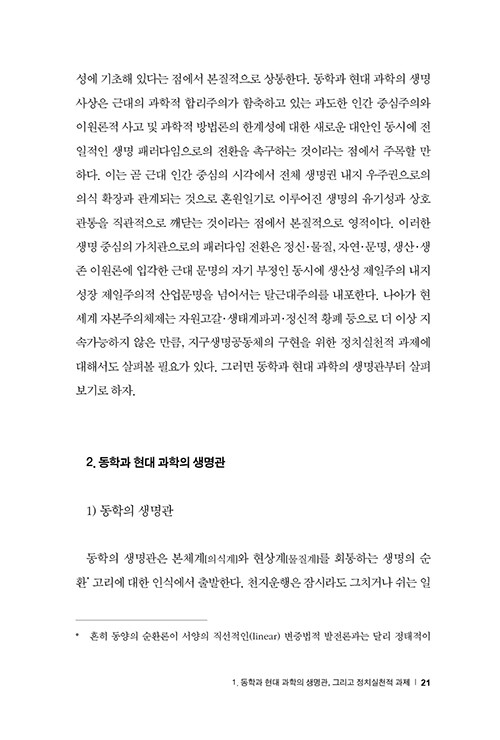


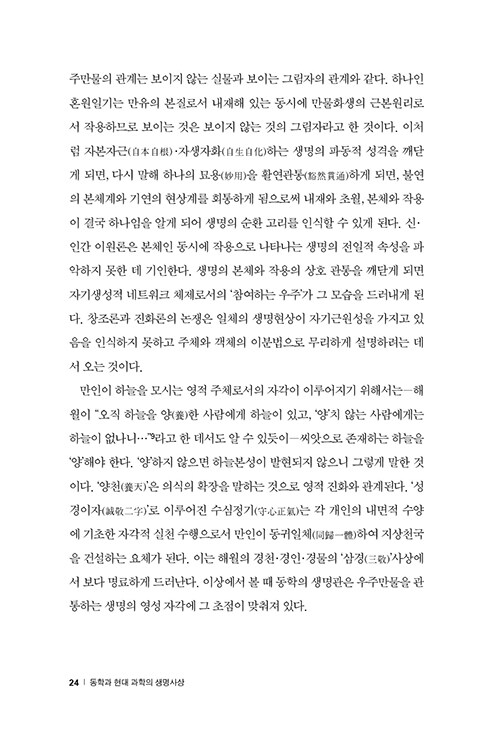

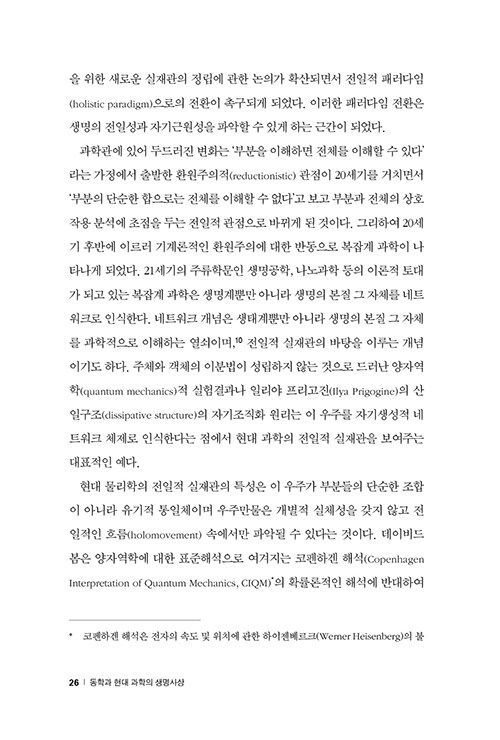
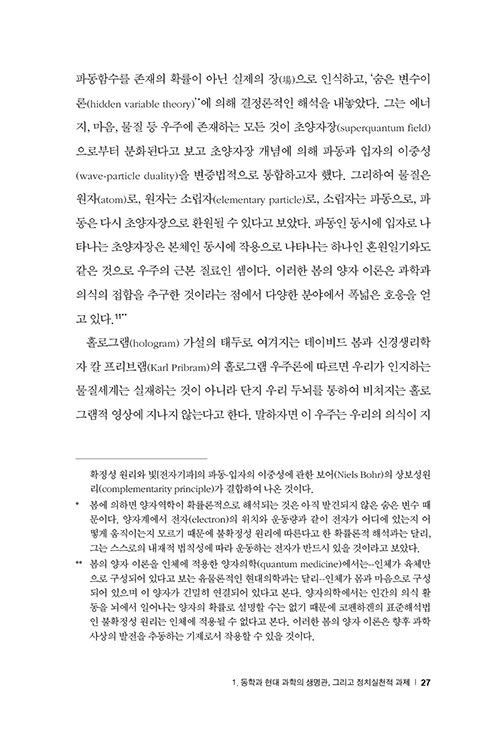
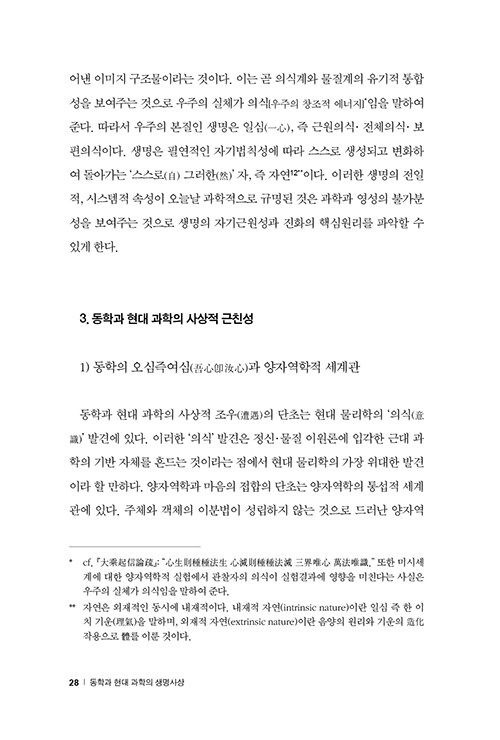

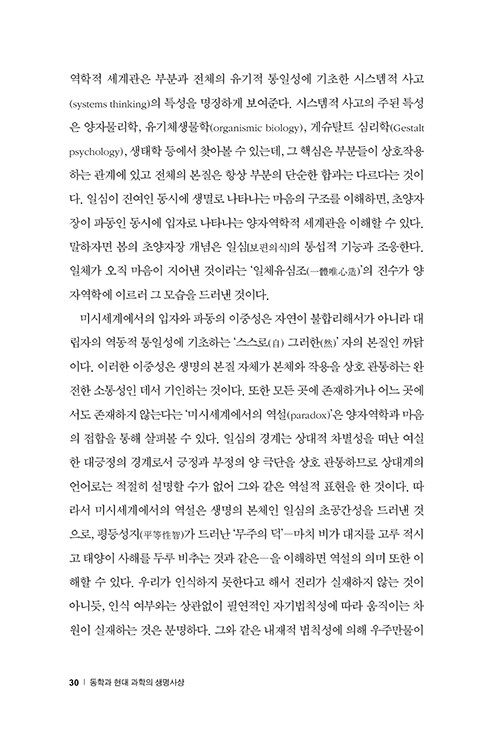
양장본
472쪽
책소개
오늘날 양자역학이 가져다준 인식의 혁명적 전환으로 문명의 대변곡점을 향해 나아가고 있는 세계와 인류가 그 과도기에서 마주하고 있는 코로나19 팬데믹, 기후위기와 그로 말미암은 대재앙, 그리고 인공지능의 성장과 그와 연계된 과학 기술의 장래와 관련한 위기의식과 그 대안에 관한 글들을 수록하였다.
저자는 세계가 현재 후천개벽의 티핑 포인트(tipping point)로 다가서고 있으며 한편으로 과학과 영성의 접합이 급속도로 진전되는 징후가 뚜렷해지는 상황에서 지구공동체적인 삶의 존재론적 반경을 설정하는 ‘세 중심축’, 즉 과학과 영성 그리고 진화에 대한 통섭적 이해가 필요하다고 보고 이를 동학과 현대 과학의 만남을 통해서 이 시대가 처한 존재론적 딜레마를 해결하는 단서를 찾아간다.
목차
1. 동학과 현대 과학의 생명관, 그리고 정치실천적 과제
1. 서론
2. 동학과 현대 과학의 생명관
3. 동학과 현대 과학의 사상적 근친성
4. 지구생명공동체의 구현을 위한 정치실천적 과제
5. 결론
2. 생태정치학적 사유와 현대 물리학의 실재관
1. 서론
2. 생태정치학적 사유의 특성과 현대 물리학의 실재관
3. 전일적 패러다임의 정치사상적 도입
4. ‘생명의 3화음적 구조’와 생명정치
5. 결론
3. 켄 윌버의 홀라키적 전일주의(holarchic holism)와 수운의 「시」(侍)에 나타난 통합적 비전
1. 서론
2. 켄 윌버의 홀라키적 전일주의와 통합적 비전
3. 수운의 「시(侍)」철학과 평등무이의 세계관
4. 홀라키적 전일주의와 「시」에 나타난 통합적 비전
5. 결론
4. ‘특이점’의 도래와 새로운 문명의 가능성
1. 서론
2. ‘특이점’ 논의의 중요성과 미래적 함의
3. 기술의 진화와 사회적 영향 및 파급효과
4. 새로운 문명의 가능성: 동학에 길을 묻다
5. 결론
5. 과학과 영성 그리고 진화
1. 서론
2. 과학과 영성의 접합
3. 영성 계발과 진화
4. 지구 문명의 새로운 지평 탐색
5. 결론
6. 포스트모던 세계와 포스트휴먼 그리고 트랜스휴머니즘
1. 서론
2. 포스트모던 세계에 대한 초기 담론
3. 포스트모던 세계에 대한 후기 담론
4. 호모 사피엔스를 넘어서
5. 결론
7. 포스트 물질주의 과학과 동학의 사상적 근친성에 대한 연구
1. 서론
2. 포스트 물질주의 과학과 동학의 실재관 및 사상적 특성
3. 포스트 물질주의 과학과 동학의 사상적 근친성
4. 결론
8. 뉴 패러다임의 정치철학적 함의와 실천적 적용
1. 서론
2. 과학적 방법론과 뉴 패러다임의 등장
3. 뉴 패러다임의 정치철학적 함의
4. 뉴 패러다임의 실천적 적용의 한계 및 극복 방안
5. 결론
<부록>
‘한’과 동학의 사상적 특성과 정치실천적 과제
『화엄일승법계도(華嚴一乘法界圖)』와 『무체법경(無體法經)』에 나타난 통일사상
접기
책속에서
P. 23 동학의 생명관은 평등무이(平等無二)의 세계관에 기초하여 불연과 기연을 생명의 본체와 작용의 관계로서 상호 회통시키고 있다. 불연과 기연이 본래 한 맛임을 알게 되면, 생(生)·주(住)·이(異)·멸(滅)의 사상(四相)의 변화가 그대로 공상(空相)임을 깨닫게 된다. 만유가 그러하듯 사람 또한 죽음과 더불어 영원히 사라지는 것이 아니라 다른 형태의 에너지로 변환하는 것임을 알게 되면, 생명이 무시무종(無始無終)이고 무소부재(無所不在)이며 불생불멸이라는 사실을 깨달아 한 길로 생사를 초월하게 되는 것이다. 이는 동학의 생명관이 상대적 차별성을 떠난 여실한 대긍정의 세계를 지향하고 있음을 보여주는 것이다. 이러한 평등무이의 세계관은 수운(水雲) 심법의 키워드라 할 수 있는 ‘오심즉여심(吾心卽汝心: 내 마음이 곧 네 마음)’에서 명료하게 드러난다. 여기서 ‘오심’과 ‘여심’은 본체와 작용의 관계로서 하늘마음[근원의식, 전체의식, 보편의식]과 사람마음[부분의식, 특수의식]이 분리될 수 없는 하나임을 보여주는 것이다. 보편자인 하늘은 만유에 편재해 있는 까닭에 만유와 분리될 수 없는 것이다. 접기
P. 168 동학의 평등무이의 세계관은 불연기연적 세계관에서 뿐만 아니라 동학 심법(心法)의 키워드인 ‘오심즉여심(吾心卽汝心: 내 마음이 곧 네 마음)’에서도 분명히 드러난다. 경신년(庚申年) 4월 5일 수운은 ‘오심즉여심’의 심법과 함께 무극대도를 하늘로부터 받는 신비체험을 하게 된다. 밖으로는 접령(接靈)의 기운이 있고 안으로는 강화(降話)의 가르침이 있으되 보이지도 들리지도 않는 가르침의 말씀은 ‘내 마음이 곧 네 마음’이라고 하는 것으로 시작된다. 이는 곧 하늘마음(天心)이 수운의 마음(人心)과 같다는 뜻으로 천인합일(天人合一)의 정수를 보여준다. 세상 사람들이 천인합일의 심오한 의미를 파악하지 못하는 것은 우주만물의 생성·변화·소멸의 전 과정이 하늘의 조화 작용임을 알지 못하기 때문이다. 말하자면 천지의 형체만 알 뿐 천지의 주재자인 하늘은 알지 못하기 때문에 우주섭리와 인사(人事)의 긴밀한 연계성을 파악하지 못하는 것이다. 그러나 ‘체’로서의 ‘신령[不然]’과 ‘용’으로서의 ‘기화[其然]’가 하나임을 알면, 다시 말해 우주만물이 지기(至氣, 混元一氣, 神靈)인 하늘기운의 화현임을 알게 되면 생명의 전일성과 유기적 통합성을 깨닫게 되므로 각자위심(各自爲心)에서 벗어나 동귀일체(同歸一體)가 이루어져 천리(天理)에 순응하는 삶을 살 수 있게 된다. 접기
P. 176 동학은 인간 자체의 근본적인 변화를 바탕으로 다음의 몇 가지 점에서 새로운 휴머니즘의 길, 신문명의 길을 제시한다. 첫째, 동학은 완전한 소통성과 평등무이의 세계관에 기초하여 근본지(根本智)로의 회귀를 촉구함으로써 무극대도의 세계를 지향한다는 점이다. 둘째, 동학은 하늘과 인간, 인간과 사물의 융화에 기초하여 조화적 통일과 대통합을 지향하는 강한 실천성을 띤 사상적 특색을 보여주고 있다는 점이다. 셋째, 동학의 후천개벽은 인류 문명의 대변곡점을 지칭하는 광의의 ‘특이점’과 조응하며 천시(天時)와 인사(人事)의 상합에 기초해 있다는 점에서 포괄적이고도 총합적인 개념이라는 점이다. 특히 ‘기술적 특이점’에 착안한 레이 커즈와일이나 버너 빈지의 협의의 특이점과는 달리 동학의 후천개벽은 인위의 정신개벽과 사회개벽 그리고 무위자연의 천지개벽이 분리될 수 없는 하나라고 보고 우주적 본성으로의 회귀를 통해 후천개벽의 새 세상이 열리는 길을 제시한다. 넷째, 동학은 천지개벽의 도수에 따른 후천 곤도(坤道)시대의 도래와 맥을 같이 하여 음양의 조화를 특히 강조하며 진보된 여성관을 보여주고 있다는 점이다. 동학의 ‘여성성’은 서구 휴머니즘의 극복으로서의 새로운 휴머니즘의 길, 신문명의 길을 제시해야 할 과제를 안고 있다. 접기
P. 213 동학은 한마디로 ‘심학(心學)’이다. 그 요체는 마음의 본체를 밝혀서 세상 사람들이 천심을 회복하여 동귀일체(同歸一體)하게 하려는 지행합일(知行合一)의 심법(心法)이다. 동학은 앎과 삶의 경계 등 일체의 이분법을 넘어서 있으며, ‘시천(侍天)’을 ‘양천(養天)’으로 풀이하고 있다는 점에서 지행합일의 심법이라고 적극적으로 해석할 수 있다. ‘영[神靈]’과 기운[氣化], 즉 생명의 본체인 하늘과 그 작용으로 생겨난 만물의 일원성에 대한 인식은 의식이 확장되지 않고서는 이루어지기 어렵다. 의식의 확장은 곧 영적 자각의 나타남이며 이는 곧 영적 진화와 연결된다. 영적 진화 또는 의식의 진화는 어디까지를 ‘나’ 자신으로 느끼는지가 관건이다. 나와 가족까지인가, 지역사회와 국가까지인가, 인류까지인가, 나아가 우주자연까지인가. 이러한 의식의 스펙트럼은 의식의 확장과 사랑의 크기에 의해 생겨난다. 인간의 의식이 확장될수록, 영적으로 진화할수록 사랑은 그만큼 전체적이 된다. 그리하여 천·지·인 삼신일체의 천도(天道)가 인간 존재 속에 구현되는 ‘인중천지일(人中天地一)’의 경계에 이르면 하늘과 사람과 만물을 온전히 하나로 느낄 수 있게 된다. 접기
P. 219 만물의 근원으로서의 영성[靈]에 대한 인식은 동학 「시」의 세 가지 뜻풀이, 즉 내유신령·외유기화·각지불이에서 명료하게 드러난다. 우주만물의 생성·변화·소멸 자체가 모두 ‘신성한 영(神靈)’, 즉 하늘(한울)의 조화 작용이므로 의식계[본체계]와 물질계[현상계], 영성과 물성은 결국 하나다. 이러한 만유의 유기성과 상호관통을 깨달아 무위이화의 덕과 그 기운과 하나가 되는 ‘조화정(造化定)’의 경계에 이르면 일체의 경계를 넘어 만물의 상호관통을 알게 되므로 「시천주」의 자각적 주체에 의한 무극대도의 이상세계가 구현될 수 있다. ‘불이(不移)’의 요체는 본래의 진여한 마음을 지키고 기운을 바르게 하는 것이며 바로 이 수심정기가 공심이 발휘될 수 있는 바탕이 된다. 「시천주」 도덕의 요체는 ‘성경이자(誠敬二字)’로 설명되는 수심정기이다. 동학은 한마디로 심학이며, 만물에 대한 평등무차별한 사랑과 공경의 원천이 되는 것은 일심이다. 진화란 “내가 나 되는 것”을 향한 복본(復本)의 여정이다. 우주만물의 네트워크적 속성을 알아차리는 만사지(萬事知)에 이르면 생명과 평화의 문명이 열리게 된다는 것이 동학에서 말하는 진화의 진수다. 접기
P. 264 새로운 계몽의 시대로 안내하는 길라잡이를 동학의 사상적 특성에서 몇 가지 추출해 볼 수 있다. 첫째는 통섭적 생명관에 기초한 생명사상이라는 점, 둘째는 완전한 소통성과 평등무이의 세계관을 바탕으로 무극대도의 세계를 지향하는 점, 셋째는 생태학적 사유체계를 바탕으로 에코토피아적 지향성을 띠고 있는 점, 넷째는 천지개벽에 조응하는 정신개벽과 사회개벽을 통해 「시천주」 도덕을 생활화하는 강한 실천성을 띤 생활철학이라는 점 등은 이원론의 유산 극복의 과제를 안고 있는 근대적 사유체계를 대체함으로써 새로운 계몽의 시대로 안내할 수 있을 것이다. 실로 동학의 통섭적 사유체계는 포스트휴먼 시대가 처한 존재론적 딜레마를 해결하는 데 유효한 단서를 제공해 줄 수 있을 것이다. 접기
P. 289 동학의 실재관은 동학을 관통하는 핵심 논리인 불연기연에서 보듯 생명의 본체와 작용의 합일을 함축한 전일적 실재관에 기초해 있다. 하늘과 만물의 일원성은 수운의 「시천주」 도덕에서도 드러난다. 참본성[참자아]인 신성한 영(靈)은 만유의 본질로서 내재해 있는 동시에 만물화생의 근본 원리로서 작용한다. ‘신령’과 ‘기화’는 본체와 작용, 내재와 초월의 합일에 대한 인식을 보여 주는 것으로 생명의 전일성과 자기근원성을 밝힌 것이다. 각지불이는 ‘신령’과 ‘기화’가 하나임을 아는 것, 즉 생명이 영성임을 깨달아 참자아의 자각적 주체로서 인내천을 실천하는 것이다. 이처럼 「시천주」 도덕의 실천은 우주만물의 근본이 ‘하나’임을 자각하는 만사지(萬事知)를 전제로 하며, ‘조화정(造化定)’의 삶 속에서 현실화된다. ‘자기원인’이자 만물의 원인인 하늘은 만물과 분리될 수 없는 까닭에 특정 종교의 하늘(님)이 아니라 만인의 하늘이며, 경배해야 할 초월적 존재가 아니라 마음이 곧 하늘이다. 한마디로 동학은 에코토피아적 지향성을 가진 무극대도의 사상이다. 접기
P. 325 동학 ‘시(侍)’의 3화음적 구조는 융복합·통섭의 메커니즘을 간파함으로써 일체 만물이 전일성의 현시임을 밝히고 생명의 전일성에 대한 실천적 사유를 전개함으로써 뉴 패러다임의 실천적 적용의 한계를 극복할 수 있게 한다. 만인이 천심을 회복하여 우주 ‘한생명’을 자각적으로 실천하면 동귀일체가 이루어져 후천개벽의 새 세상이 열리게 된다는 것이다. 천지개벽의 도수에 조응하여 인위의 정신개벽과 사회개벽이 이루어지면 천지가 합덕하는 진정한 생명시대가 열리게 되는 것이다. 이는 단순히 정신개벽과 사회개벽을 통한 지구 질서의 재편성이 아니라 천지운행의 원리에 따른 우주적 차원의 질서 재편이다. 「시천주」 도덕이 우주만물을 전일성의 현시로 본 이면에는 본래의 천심을 회복하여 ‘내가 나 되는 것’을 통해 공심(公心)의 발휘가 극대화됨으로써 평등무이한 무극대도의 세계를 구현하려는 동학사상의 실천원리가 담겨 있다. 접기
저자 및 역자소개
최민자 (지은이)
저자파일
신간알리미 신청
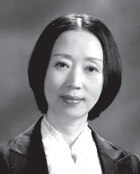
● 現 성신여자대학교 정치외교학과 명예교수
● 성신여자대학교 정치외교학과 교수
● 부산대학교 정치외교학과 졸업
● 미국 애리조나주립대학교(Arizona State University) 정치학 석사
● 영국 켄트대학교(University of Kent at Canterbury) 정치학 박사
● 중국 북경대학교 객원교수
● 중국 연변대학교 객좌교수(客座敎授)
● 1994년 장보고 대사의 해외거점이었던 중국 산동성에 장보고기념탑 건립(건립위원장, 현지 문물보호단위로 지정)
● 1999년 중국 훈춘에서 유엔측 대표, 중국 훈춘시 인민정부 시장, 러시아 하산구정부 행정장관 등과 중국·북한·러시아??3국접경지역 약 2억평 부지에 유엔세계평화센터(UNWPC) 건립을 위한 조인식(UNWPC 건립위원장)
● 저서로는 『호모커넥투스: 초연결 세계와 신인류의 연금술적 공생』(2020), 『무엇이 21세기를 지배하는가』(2019), 『빅?히스토리: 생명의 거대사, 빅뱅에서 현재까지』(2018), 『스피노자의 사상과 그 현대적 부활』(2015), 『새로운 문명은 어떻게 만들어지는가: 한반도發 21세기 과학혁명과 존재혁명』(2013), 『동서양의 사상에 나타난 인식과 존재의 변증법』(2011), 『통섭의 기술』(2010), 『삶의 지문』(2008), 『생명에 관한 81개조 테제: 생명정치의 구현을 위한 眞知로의 접근』(2008), 『생태정치학: 근대의 초극을 위한 생태정치학적 대응』(2007), 『천부경·삼일신고·참전계경』(2006), 『동학사상과 신문명』(2005), 『세계인 장보고와 지구촌 경영』(2003), 『새벽이 오는 소리』(2002), 『직접시대』(2001), 『길(道)을 찾아서』(1997) 등이 있다. 논문으로는 「뉴 패러다임의 정치철학적 함의와 실천적 적용」(2020), 「포스트 물질주의 과학과 동학의 사상적 근친성에 대한 연구」(2019), 「‘한’과 동학의 사상적 특성과 정치실천적 과제」(2018), 「포스트모던 세계와 포스트휴먼 그리고 트랜스휴머니즘」(2017), 「특이점의 도래와 새로운 문명의 가능성」(2016), 「과학과 영성 그리고 진화」(2016), 「국제 정의의 역설과 그 대안적 모색」(2015), 「『에티카』와 『해월신사법설』의 정치철학적 함의와 에코토피아적 비전」(2014), 「보수의 한계와 책임 그리고 메타윤리 탐색」(2014), 「아리스토텔레스와 해월의 정치철학과 실천의 형이상학」(2013), 「『화엄일승법계도』와 『무체법경』에 나타난 통일사상」(2012), 「켄 윌버의 홀라키적 전일주의(holarchic holism)와 수운의 「侍」에 나타난 통합적 비전」(2011) 등이 있다. 접기
최근작 : <호모커넥투스>,<전라도 전주 동학농민혁명>,<무엇이 21세기를 지배하는가> … 총 20종 (모두보기)
출판사 제공 책소개
생태적으로 지속가능한 지구공동체의 새길 찾기
인간 영성의 제자리 찾기를 통한 특이점의 포월
오늘의 지구적 차원의 인류사적인 과제는 생태적으로 지속가능한 지구공동체의 길을 찾아내는 것이라고 말할 수 있다. 현 시점에서 현상적으로, 이 과업을 수행해 나가는 데서 최대 장애물은 코로나19 팬데믹과 같은 감염병의 풍토화, 기후위기로 인한 대재앙의 일상화, AI가 지배하는 디스토피아 세계의 현실화 등이라고 말할 수 있다. 나아가 이러한 장애물을 낳은 선행의 원인들, 즉 인류를 오랫동안 괴롭혀 온 전통적인 과제들 또한 그 하나하나가 인류사의 바람직한 진전을 가로막는 장애물이기는 마찬가지다.
이 책에 수록된 논문들은 이러한 장애를 전면적으로 극복하고 새로운 인류문명 사회에 도달하기 위해서는 이 우주(생명계)가 상호의존성과 유기적 통합성에 의거한 ‘살아 있는 시스템’, 즉 천인합일임을 체득할 수 있어야 한다고 주장한다. 그리고 이러한 인류사적 과제 해결에 가장 근접한 것이 바로 동학과 현대 과학(물리학)이라고 이야기한다. 이러한 인식과 관점이 이 시대에 새롭게 부각되는 것은 “과학을 통한 영성으로의 접근”과 “영성을 통한 과학으로의 접근”이 인간의식과 과학문명의 진화를 통해 필연적으로 상호 접점을 찾아냈기 때문이다.
저자는 특히 동학(東學)과 양자혁명 이후의 현대 과학은 많은 차이점에도 불구하고, 오늘의 인류사회의 과제―생태적으로 지속가능한 지구공동체의 길 찾기―를 감당할 수 있는 유이(唯二)한 존재라고 주장한다. 또 동학과 현대 과학의 근친성을 생명의 관점에서 재조명함으로써, 앞으로의 지구문명을 생명 중심의 패러다임으로 재구축할 것을 주장한다. 생명의 관점에서 볼 때 동학과 현대 과학은 비분리성․비이원성에 기초해 있다는 것이다. 이러한 공통 특징은 근대의 과학적 합리주의의 과도한 인간 중심주의와 이원론적 사고 및 과학적 방법론, 그리고 그로부터 야기된 현재의 산업문명의 한계성을 극복할 유일한 대안이라고 이야기한다.
이러한 사유의 접합은 예컨대 켄 윌버의 홀라키적 전일주의와 수운의 ‘시(侍)’에 나타난 통합적 비전의 유사성을 통해서도 말할 수 있다. 이들은 우주의 본질인 생명의 전일성에 대한 통찰력을 제고함으로써 소통․자치․자율에 기초한 지구생명공동체의 구현에 기여할 수 있다. 이러한 통합적 비전의 또 다른 효능은 낡은 기계론적 세계관의 관점이 더 이상은 생물적, 심리적, 사회적, 환경적 현상이 상호 연결되어 있는 오늘의 실제 세계를 반영하지도, 문제 해결의 유익한 단서를 제공하지 못한다는 사실을 폭로한다는 점이다.
오늘날 인류가 누리는 삶의 안정성을 위협하는 요소는 구체적으로 자연적인 것과 인공적인 것 두 방면에 걸쳐 있다. 그중 인공지능, 사물인터넷, 빅데이터 등 정보통신기술 분야의 기술 혁신은 그나마 인간이 오랫동안 대처해 왔던 기후위기 등의 전통적인 과제이자 자연적인 것과는 판이한 과제를 인류 앞에 던진다. 즉 현재 지식혁명, 산업혁명, 디지털혁명의 대전환은 우주의 시원을 이루는 빅뱅의 ‘특이점’에 버금가는, 새로운 특이점으로 다가온다고 이야기된다. 저자는 사물인터넷과 빅데이터를 기반으로 하는 인공지능은 인류의 집합의식이 이입된 것이기 때문에 실은 인간 자체의 윤리 문제라고 말한다. 이것이 초래할 수도 있는 미증유의 재앙은 동학의 통섭적 사유체계로서 공공성을 극대화하는 것에 의해 근원적으로 해소할 수 있게 하는 것이다. “동학의 후천개벽은 정신개벽, 사회개벽 그리고 천지개벽이 변증법적 통합을 이루어 새 하늘과 새 땅을 창조하는 ‘다시개벽’으로 새로운 휴머니즘의 길, 신문명의 길을 제시한다.”
저자는 미래의, 대안의, 새로운 지구 문명의 새로운 지평 탐색을 위한 세 가지 존재론적 반경으로 “과학”과 “영성” 그리고 “진화”를 제시한다. 이때 과학은 오늘날의 ‘양자혁명’ 시대를 관통하면서 영성과의 접합을 시도하는 새로운 과학이다. 또한 영성은 종교라는 외피에 갇히지 않은 만유의 내재적인 본성인 신성(神性)을 의미하며 그 육화(肉化)로서의 만유-세계를 포괄하는 개념이다. 또한 진화란 영적 진화이자 공진화로서의 진화이다. 이처럼 과학과 영성 그리고 진화 대한 통섭적 이해를 통해서 인류의 진화 과정에서 획기적인 전기가 되고 있는 이 시기를 슬기롭게 지나고, 그에 따르는 지구문명의 새로운 지평을 탐색하는 것이다.
저자는 현재의 시대적, 시대적 조건은 개별화된 개인-개인의 고립성이 절대화된 현대(모던)사회의 포스트휴머니즘으로부터 네트워크화된 세계, 이 우주와 분리되지 않은 확장된 인간형으로서의 트랜스휴머니즘으로 진전하는 것이라고 본다. 이러한 역사적 조건 속에서 내 안의 우주성을 이야기하는 동학사상의 의미와 시사점, 나아가 포스트 물질주의 과학과 생명사상의 진수를 담고 있는 동학과의 접점을 찾아 비교함으로써 “과학을 통한 영성으로의 접근”과 “영성을 통한 과학으로의 접근”이라는 상호 피드백 과정이 폭발적으로 일어나는 이 시대의 미래를 조망한다.
저자가 정리한 동학과 현대 과학의 접점은 다음 여섯 가지로 정리할 수 있다.
첫째, 동학과 현대 과학의 통섭적 생명관의 비교 고찰을 통해 공통의 핵심 주제가 ‘생명’이며, 생명의 본질 자체가 ‘참여하는 우주’의 경계임을 밝히고 있다.
둘째, 생명을 ‘하나’인 일기(一氣, 至氣)로 보는 동학과, 우주만물을 에너지 장(場) 즉 매트릭스로 보는 현대 물리학의 관점이 생명을 비분리성·비이원성을 강조한다는 점에서 본질적으로 상통함을 밝히고 있다.
셋째, 네트워크가 상호작용하며 만들어내는 다양한 패턴을 ‘자기조직화’라고 하는 복잡계 과학의 관점을, 만물화생(萬物化生)의 근본 이치를 설파한 동학의 관점에 조응시킴으로써 생명의 전일성과 자기근원성의 심원한 의미를 실제 삶의 영역에서 들여다볼 수 있게 하였다.
넷째, 생명현상을 전일적 흐름으로 보는 양자물리학의 관점을, 생명의 본체와 작용의 묘합 구조인 동학의 ‘시(侍: 모심)’ 철학에 조응시킴으로써 통합적 비전에 의해 세계가 재해석되어야 한다는 것을 밝히고 있다.
다섯째, ‘신성한 영(神靈)’인 동시에 ‘기화(氣化)’로 나타나는 일심(一心)의 이중성을, ‘양자의 역설(파동=입자)’의 존재성과 회통시킴으로써 생명의 본체와 작용, 내재와 초월이 합일이라는 것을 밝히고 있다.
여섯째, 현실 세계가 부분이 전체를 포함하는 홀로그램과 같은 일반원리에 따라 구성되어 있다고 보는 홀로그램 우주론과, 우주만물[부분]이 하늘[전체]을 모시고 있다며 생물과 무생물의 경계마저 넘어선 동학의 시천주의 세계관이 물질의 공성(空性)을 바탕으로 한다는 점에서 본질적으로 상통함을 밝히고 있다. 접기
